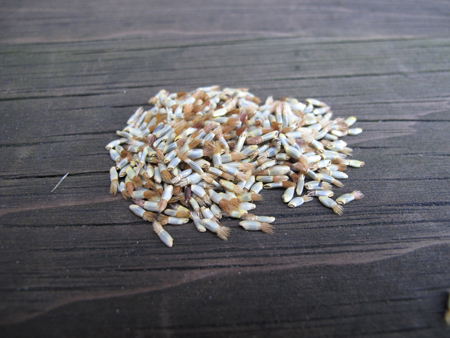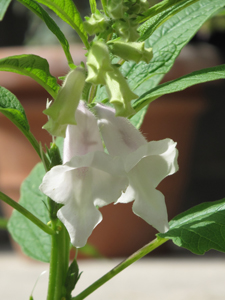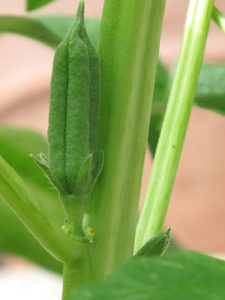Friday, October 19, 2012

Seeds of the cornflower (Centaurea cyanus). Photograph by Esme Webb
How Love burns through the Putting in the Seed
On through the watching for that early birth
When, just as the soil tarnishes with weed,
The sturdy seedling with arched body comes
Shouldering its way and shedding the earth crumbs.
???Robert Frost, “Putting in the Seed”
For some, it’s planting fall bulbs and anticipating the explosion of spring color, for others it’s edging out a brand new perennial bed. For me, the most thrilling aspect of being a gardener is sowing a seed and watching it spring to life. It feels nothing short of miraculous every single time, and success depends on exactly the right conditions. This post is a small introduction to my first year as a gardener at the Cloisters, and my adventures in propagation so far.
Read more »
Tags: arugula, bottle gourd, calendula, collard greens, Columbine, cornflower, creeping thyme, dame's rocket, dianthus, downy thornapple, Dutch field peas, English daisy, green orach, gum arabic, Jacob's ladder, lupine, mullein, purple foxglove, sea holly, sesame, Sesamum indicum, stavesacre, violas, viper's bugloss, wallflower
Posted in Gardening at The Cloisters | Comments (7)
Friday, August 3, 2012


Sesame, also known as “benne,” is a tender, large-leaved, Asian annual grown here in Bonnefont garden. Sesame has been cultivated for some five thousand years and was known to many cultures in antiquity. Although the plant is somewhat rangy and coarse in habit, the tubular flower (above, left) is attractive. The immature green pods (above, right), which will split and spill out their seeds when ripe, contain one of the world’s oldest domesticated oilseeds. The seeds also have a long history of use as a seasoning.??Photographs by Carly Still.
A cultivated plant of fabulous antiquity, sesame (Sesamum indicum) is known as simsim in Arabic, susam in Turkish, sesam in German, s??same in French, sesamo in Italian, and sesame in Spanish. Called sesemt by the ancient Egyptians, it was also grown in Ethiopia in very early times. Sesame seeds were taken from West Africa to America by slave traders; the name “benne” derives from the West African benni. Sesame had long been grown in India and Persia, and was introduced to China by the end of the fifth century A.D. Read more »
Tags: De Materia Medica, Dioscorides, flax, hellebore, Herodotus, Hortus Sanitatis, John Ruskin, poppy, sesame, Sesamum indicum
Posted in Food and Beverage Plants, Medicinal Plants | Comments (0)



